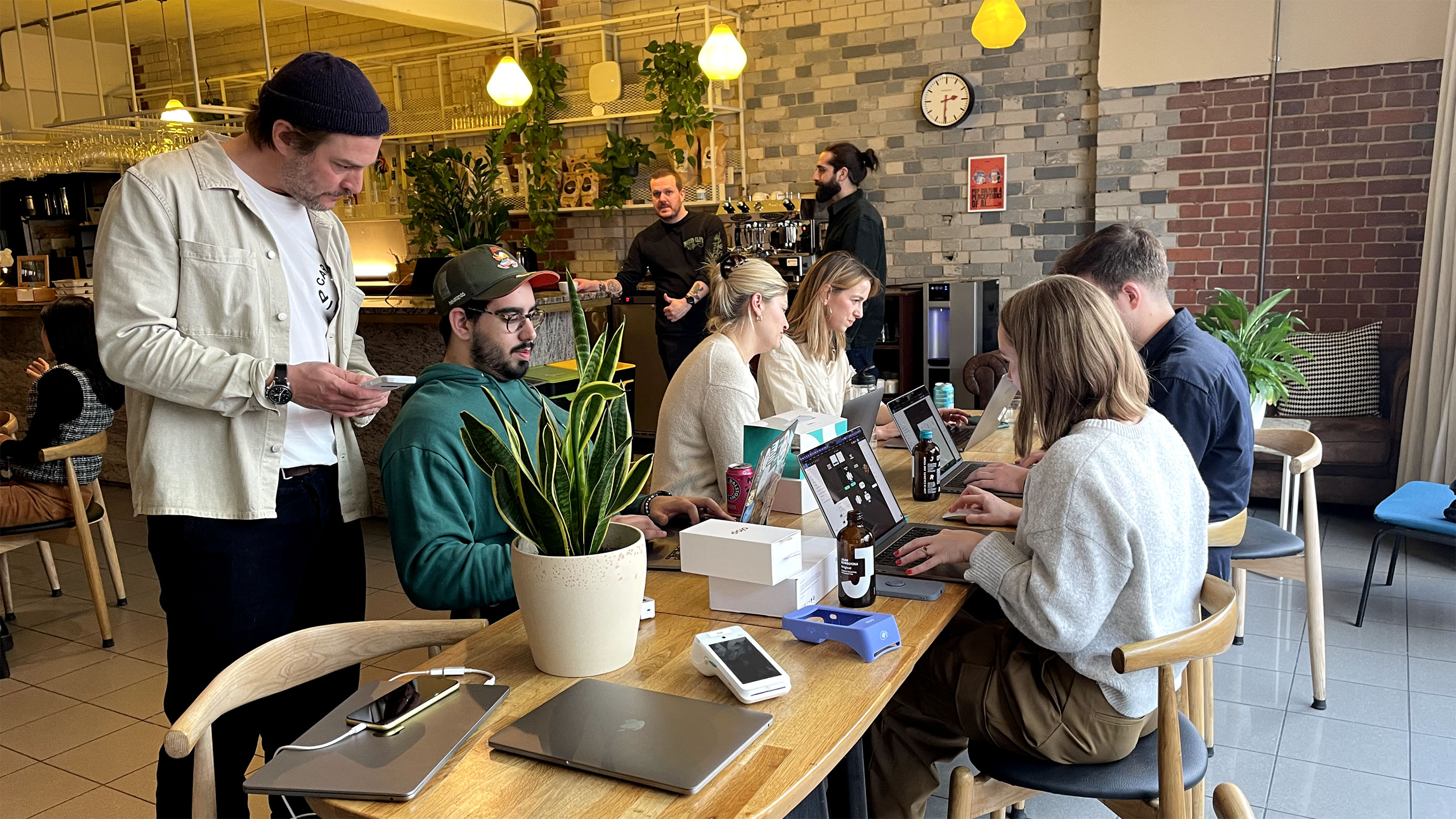Product teams are busier than ever. We have more data to manage and make sense of, and more stakeholders to understand and keep up to date. There are emerging technologies which we need to assess and get up to speed with. We need to stay on top of current trends and make sure we rise above internal politics among different stakeholders and competing priorities.
This easily leads to some common problems. There can be a lack of alignment across teams meaning inconsistent decision making. Work can quickly become disorganised, and time wasted. The potential to learn from each other is reduced and we struggle to keep our stakeholders inspired and on the journey.
All of this adds up to being less efficient and less effective – a combination that can get in the way of growth.
Enter ProductOps.

The goal of ProductOps is to increase efficiency. ProductOps diagnoses problems the product team faces, from the tools they’re using to challenges with leadership, and works to fix them.
Though the term might be relatively new, good product teams have been sharing ProductOps work between roles for years. Lately, it’s started to gain popularity as a skill set, role or sometimes even a department in its own right. Mature, product-led companies have been the first to adopt ProductOps as its own function.
Even though it hasn’t been widely established as its own discipline, “ProductOps is probably happening in pockets in most organisations,” says Oliver Tuley, Senior Product Owner at Jaguar Land Rover. “So there is a story to be told and elevated and amplified from within to get people to listen and engage with the concept and benefits.”
Building efficiency across different structures
ProductOps is essentially the scaffolding around the product team that helps it run smoothly.
In larger organisations, the scaffolding is huge, complicated and rigid, which means that the product team has no flexibility to adapt the way they work. This leads to increased friction and inefficiency, but at least also means consistency. In smaller organisations and startups, there is next to no scaffolding, which means enormous flexibility, but a lack of consistency, control and efficiency.
ProductOps solves various problems across product teams, and it’s defined differently across businesses of sizes and sectors.
For instance, compliance is a central issue in an industry like financial services, and so processes are set up in a linear way with stage gates, rather than a more agile process. Individuals have more latitude in a start-up team, but that lack of rigour in a discovery process around understanding feasibility, viability and usability can lead to a waste of resources.
Meanwhile, massive organisations are highly regulated, and product teams can be stymied by all of the hoops they need to jump through and the need to multiple stakeholders, which can make them inefficient.
What’s the difference between product management and ProductOps?
There’s a lot of overlap (skills and responsibilities) between ProductOps and traditional product teams, from customer empathy to data fluency.
Typically someone working in ProductOps has many of the skills and responsibilities that usually sit - explicitly or not - amongst a product team. “It's very easy for companies to just assume/expect a product manager to handle ProductOps, because we have for so long, and many people still don't know what product managers do,” says Sam Falotico, Lead Product Manager at IGN.
If a product team is doing ProductOps, it’s typically driven by the Product Director or Head of Product. Larger organisations which have PMO and separate delivery functions to product teams can also be involved in ProductOps - whether they realise it or not - because they are involved in deciding on tools, cascading information and managing multiple (sometimes siloed) teams.
But even if all the ingredients exist, there is often still a need in many organisations for a focus on ProductOps. The discipline can have wide applications, but here are some common areas where ProductOps can add value and help organisations succeed:
1. Distributing insight to create a consistent foundation for decision-making
ProductOps can help to create deep user understanding through a holistic approach to gathering, refining and interpreting research and data from across teams. ProductOps makes the relevant insights available to everyone to create a consistent decision-making foundation. Distributing insights reduces siloes to improve alignment and understanding between stakeholders.
2. Supporting decisions
By providing better and more consistent insights, ProductOps helps to support product teams’ decision-making processes. They help make decisions that are better connected to business outcomes, across teams, more consistently. They can also help facilitate and arbitrate decisions, which can be especially helpful with more ‘political’ decisions that can create clashes between different teams and their priorities.
In a large financial services client of ustwo's, we focussed a lot of energy on creating the right structure around the discovery process - when we conducted research and testing. This helped the team filter out the best ideas to ensure that what we delivered was high impact.
3. Optimising tooling and ways of working
ProductOps often helps to optimise the teams’ ways of working, which centres on the choice of tools and the processes for using them. This might sound straightforward, but consistency is often blocked by legacy systems and silos.
“Silos are a challenge that ProductOps can help with,” says Sam Nixon, Head of Wealth Product & Propositions at Aviva. “A process may be working for one group and not for another – so who has the right to change it?”
One team could be using tool X and another team tool Y. The decision process of changing tools could sit with another team altogether. By streamlining how teams work – and taking the political tension out of these choices – ProductOps can boost efficiency and make for more successful product output.
Two ways to incorporate ProductOps into your organisation
1. Embed outside experts in your team
There’s only a small pool of ProductOps specialists, but the area is growing.
I have seen time and time again with multiple clients across different industries and of varying scale that product studios are great at creating tactical focus on ProductOps. It’s a quick and easy way to unlock growth through efficiency by temporarily embedding experts in your teams who can boost your capability with an external perspective.
ProductOps coming from agencies have experience working with all different types of organisations across a variety of industries, and have seen many teams’ dynamics and issues.
Akshat Adani, Product Lead (Voice) at Miko, a former colleague of mine, thinks that “using a product agency for ProductOps is a great idea. They bring an external perspective, evaluate everything, optimise it and then can make an exit.”
2. Combine existing teams and roles to create a ProductOps team
It can be faster and easier for organisations who are looking to build the discipline in-house to pull members from different teams and bring them together as a new ProductOps team. For instance, mixing one person each from data analytics, customer success and product could make for the perfect starter ProductOps team. This brings credibility and access to data, a focus on the customer and a balance of these areas with business needs.
“You can't deliver good products without a successful operational foundation, and I don’t think many stakeholders recognise that,” Falotico says. “So whether it's hiring someone new or diversifying your team enough so they can become this Product Ops powerhouse for a period of time, it’s exciting that companies are realising that ProductOps is an important piece to the puzzle.”
ProductOps is still very much emerging. So there are growing pains like the practical and political challenges of integrating it into an existing product team and their work flow. But by thinking more intentionally about the role ProductOps can play, teams can become much more efficient. By better understanding the problems that your product team is facing, and being proactive and structured in solving those problems, you can unlock the growth that you have been looking for in your product.
